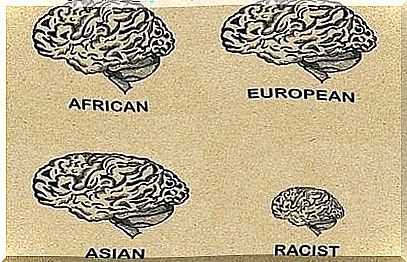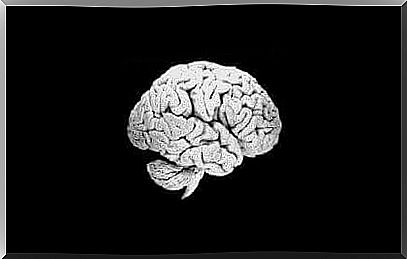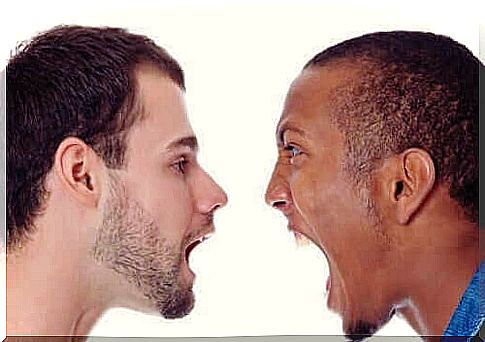How Does A Racist Person’s Brain Work?

The brain of a racist person is ruled by unfounded prejudices and the feeling of threat in the face of the unknown, of what is different. As a result, many people let themselves be taken in by an unconscious racial prejudice. Sometimes, it only takes a certain situation for the person we least expect to react in a prejudiced way.
Some experts in racial psychology, such as Drs. Leslie Zebrowitz and Dr. Yi Zhang of Brandeis University in Massachusetts, call our attention to something surprising. According to his studies, a good part of the population has several of these unconscious but automatic traits or schemes. These traits can make a person act or think racist at any given time.
Likewise, another not less interesting aspect is surprising: currently neuroscience already offers us tools to understand and even identify the brain of a racist. So much so that, as revealed in an article in The Guardian newspaper , a technique based on a brain scanner was developed in the United States that detects activities in brain areas linked to racial prejudice.
As surprising as it may seem, there are neuronal pathways that build the mark of racism. These are mechanisms formed, basically, on a very concrete emotion: fear. Let’s see more data on the topic below.

Anatomy of a Racist’s Brain
Professor Jennifer Richeson, a neuroscientist at Dartmouth College in New Hampshire, conducted a curious study published in the journal Nature in 2003. According to this study, it is possible to identify the brain of a racist person by observing whether certain areas are activated in the face of stimuli that are presented. Or, better said, according to the conversation that the person has, and with who has it.
Thus, something Jennifer Richeson’s team was able to observe when interviewing a number of white police officers in the United States was that some of them had to work very hard to be convincing. This concentration, not to mention anything offensive or derogatory, activated certain brain areas. On the other hand, those with a clear racial bias were also more active in certain regions.
These regions would be as follows:
the amygdala
The amygdala is a small brain structure that is critically important to our emotions. Thanks to her, we establish memories linked to the emotional aspect. Furthermore, she is also the sentinel of fear.
One of their main responsibilities is to interpret what might be a threat to us, and then awaken the feeling of rejection, discomfort, alarm, etc.
In this way, Richeson’s study could see how a racist’s brain immediately activates in this area when he sees people of other races or other ethnicities.

The prefrontal cortex
From a neuroscientific point of view, people who lack racial prejudices show a clear difference compared to those who have these prejudices. This difference is in the prefrontal cortex.
- Here’s how it works: when the amygdala is activated by seeing something different (a person of another ethnicity, for example), it immediately connects to the prefrontal cortex, which plays a regulatory role.
- When the “fear system” is activated, the prefrontal areas come into play to analyze the situation. Your goal is to think rationally, analyze the situation, and deter or calm this automatic system of fear and rejection.
- The cognitive control that the prefrontal cortex performs is the key to slowing down the momentum of prejudice, something that doesn’t happen in a racist’s brain.
The ventral striatum
The ventral striatum is one of the most interesting areas related to racial prejudice. It is linked to the process by which we choose social compliance. In other words, we follow what our group says, what our family, friends or part of the population defends. In other words, a reward system is activated.
It makes no difference whether your ideas are clearly biased or not. Doing, saying, and thinking like most people breeds complacency, and it’s the ventral striatum that rewards us by releasing dopamine and serotonin.
This mechanism is, in fact, a very primitive instinct that allowed, in the past, groups to stick together and distrust other individuals alien to their social unity.
Is it possible for a racist person’s brain to reduce their prejudice and think otherwise?
At the beginning of the article, we quote researchers Leslie Zebrowitz and Yi Zhang of Brandeis University. In 2012, they carried out a thorough survey to demonstrate two things.
- The first is that a racist person’s brain processes his reality differently than a non-racist;
- The second is that there is a way to change this given the high plasticity of the brain. The key to achieving this result is the approximation reflex.
In other words, it is enough to expose the racist continuously to people he rejects and his prejudice will weaken, allowing him to evaluate his behavior and his reflex of avoidance, fear or rejection to lose strength.
Undoubtedly, from this we realize the importance of educational models based on cooperation that the psychologist Elliott Aronson defended in his time. Facing these realities from an early age would certainly help us to create fairer and more respectful societies.









